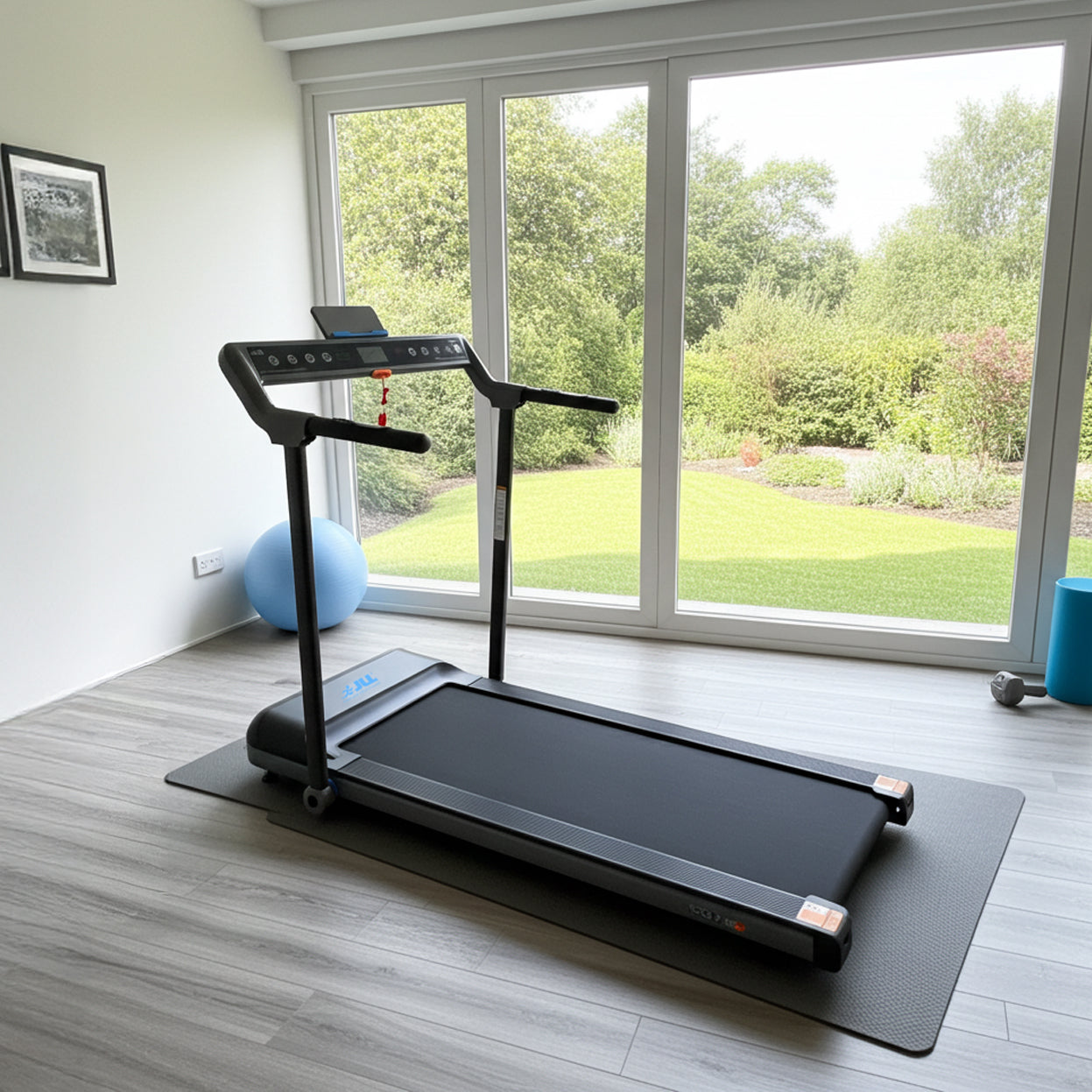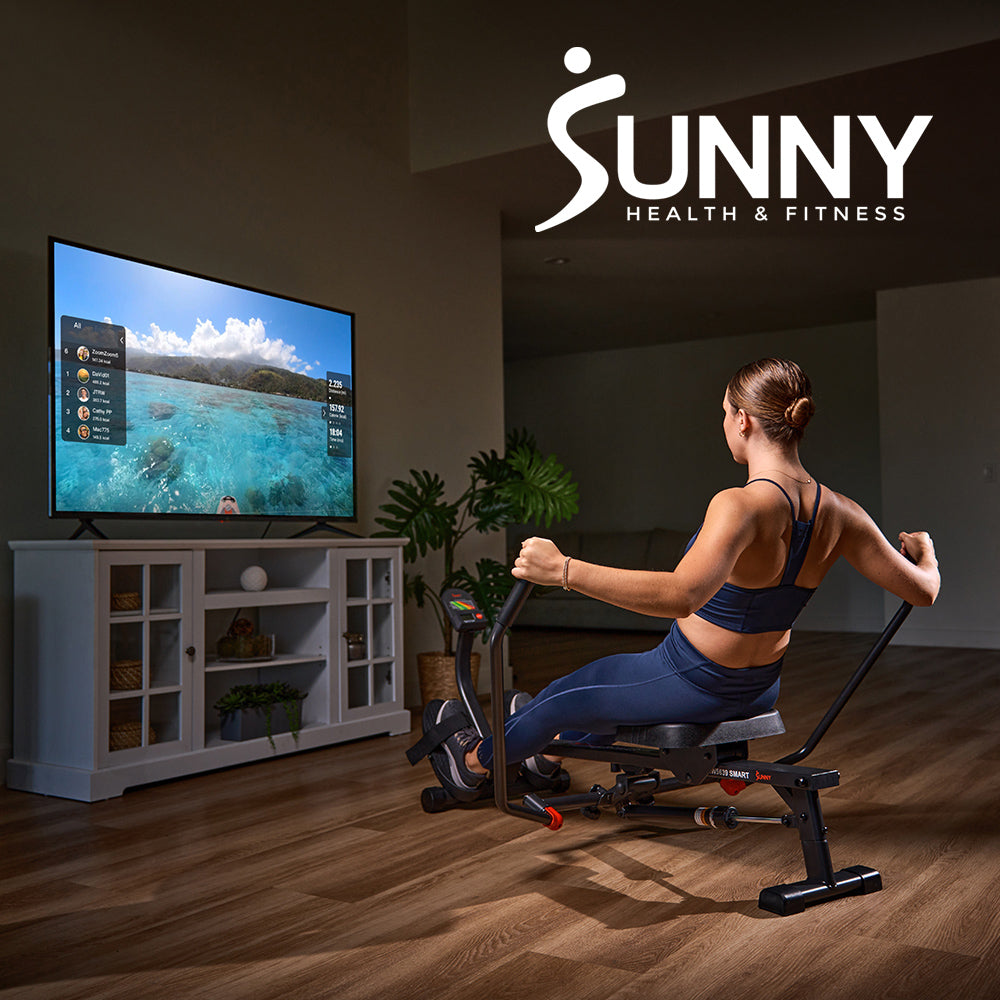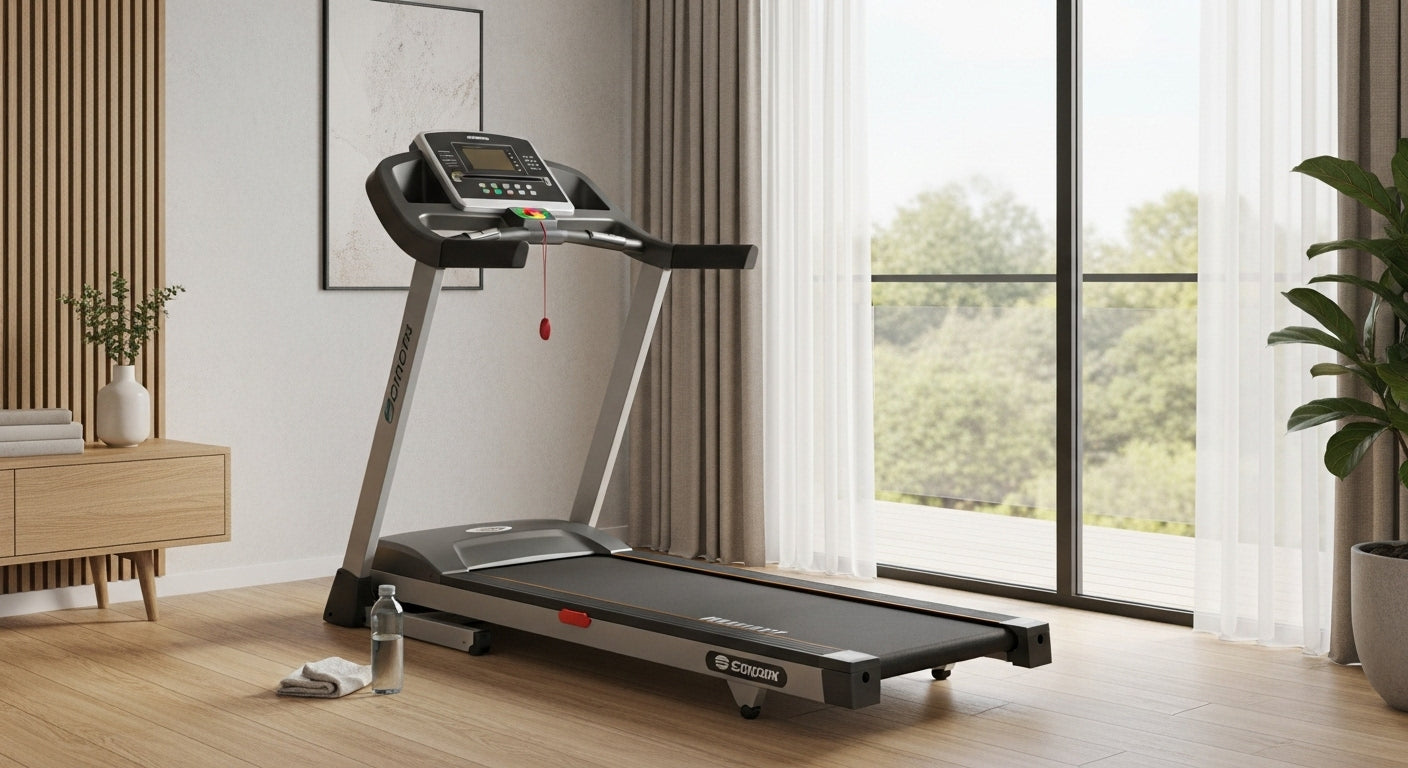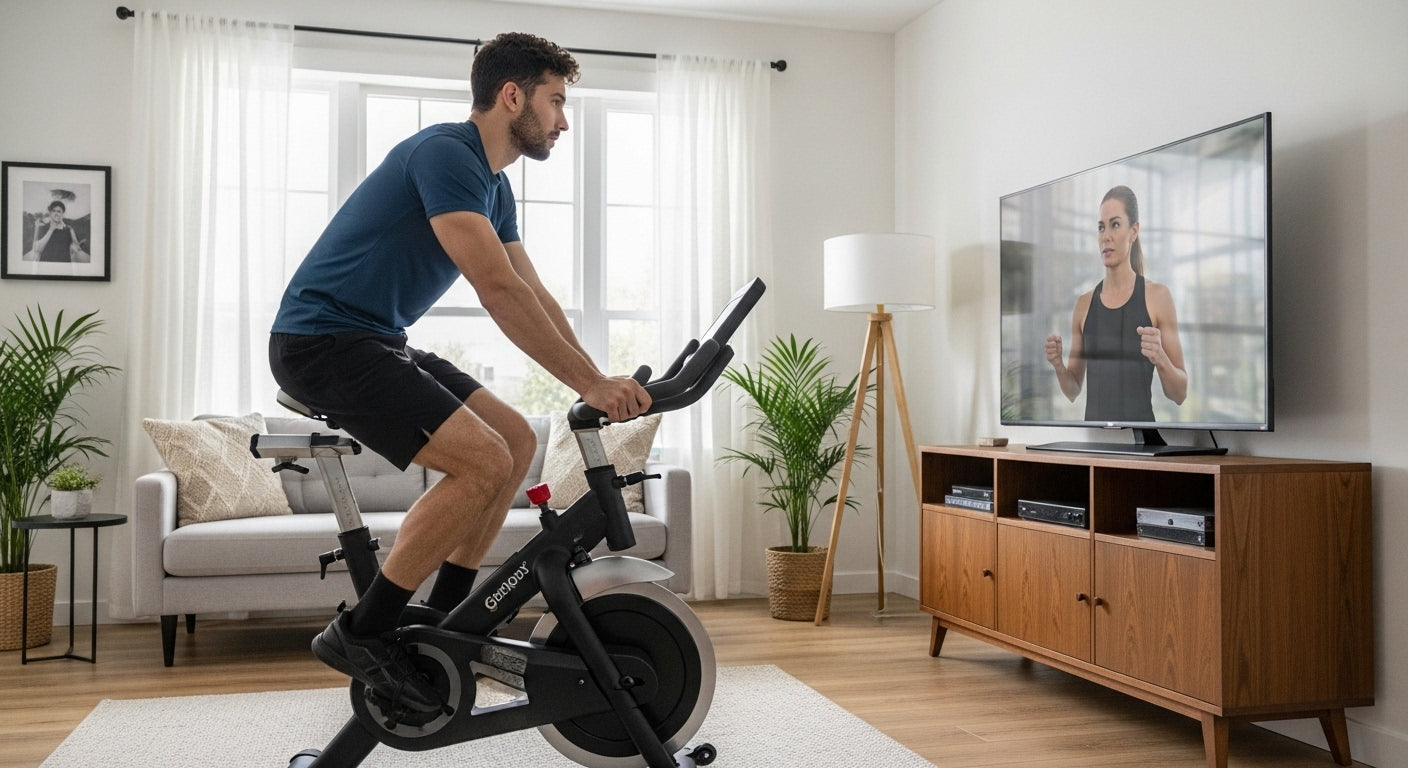If you already own a treadmill or are considering one for your home gym, you might be missing out on a cardio machine that delivers full-body training, lower joint impact and space-efficient design: the rowing machine. Whether your goal is to burn calories, build stamina or simply get consistent movement at home, a rower is a serious contender.
In this article we’ll walk you through everything you need to know to pick the right rowing machine for your space and goals. You’ll learn about different resistance technologies, what to look for in features, how to integrate rowing sessions alongside your treadmill workouts, and why for many people a rower can actually make a stronger home-gym investment. By the end you’ll feel confident choosing a rower suited to your flat or house, training style and budget. Let’s dive in.
Why cardio machines like a treadmill aren’t the only option
The limitations of a treadmill at home
A treadmill is very familiar and for good reason: you can walk, jog or run at any time, regardless of weather. Many buying guides highlight key features you should check such as motor power, belt size and incline. For instance, a review notes that you should consider “Size of the Running Surface; Speed; Incline; Programs & Entertainment.” Runner's World However in a smaller home gym or shared flat there are several practical limitations: footprint, noise, ceil ing clearance, and single-purpose leg-dominant training. Until you plan carefully, a treadmill can end up underused.
Why rowing machines deserve attention
A rowing machine offers full-body engagement. You pull with arms and core, engage legs and back, and maintain cardiovascular effort. Because the movement is seated (or partially seated) you avoid the repetitive landing forces of treadmill running. Also, many rowers fold or have minimal footprint, making them ideal for apartments or multi-use rooms. If noise and neighbour-sensitivity matter, rowers can sometimes be quieter or more directional in sound transmission. A UK purchasing guide emphasises space, weight and size when choosing a treadmill. TechRadar A rower often ticks these boxes better.
How rowing compares to treadmill training - for home gyms
From a training perspective you might ask: does rowing give the same cardio benefit as using a treadmill? The answer is yes — and more. Standard aerobic workouts on a treadmill are excellent, but if you switch in rowing, you get stronger core, upper-body and postural engagement too. For example, rowers allow for different movement patterns, so boredom is reduced and synergy with weight training improves. In home gyms where you may already have a treadmill or plan to buy one, a rower can complement the treadmill rather than replace it. Think of treadmill for foot-strike cardio, rower for full-body smart cardio.
Understanding rowing machine types
Air resistance rower
Air rowers produce resistance via a flywheel that moves air. The harder you pull, the more resistance builds. That means you don’t always need manual adjustment; the machine adapts to your effort. Ideal for HIIT and variable intensity. The mechanical simplicity often makes them robust, though noise can be higher due to airflow.
Magnetic resistance rower
Magnetic rowers offer quiet, smooth operation. A magnet slowly approaches or moves away from a flywheel to change resistance. These are excellent for apartment settings where noise matters, and for steady state cardio. They also often have compact designs and good monitor features.
Water resistance rower
Water rowers mimic the feel of on-water rowing: the water in a tank and paddle create resistance. Many users like the sound and smooth pull rhythm. They look elegant and may double as furniture in shared homes. Footprint tends to be larger, but aesthetics and feel are premium.
Hydraulic/piston rower
These are very compact and often budget-friendly. Resistance is via pistons or hydraulics. Best for casual use, low-footprint set-ups or under-desk movement, but they may lack the stride length or stability of larger machines.
How each compares in feel, cost and footprint
- Air: high performance, good for serious workouts, moderate to high noise.
- Magnetic: quietest, great for shared spaces, slightly higher cost.
- Water: premium look and feel, mid-to-high cost, larger size.
- Hydraulic: very compact, lowest cost, best for light cardio not full-on training.
If you’re upgrading from a treadmill or adding one to your home gym, choose the type that fits your space, training style and budget.
Key features to look for in a rowing machine
Resistance mechanism and adjustable levels
Check how many levels of resistance or how the system adapts. For example, magnetic rowers may offer 10-20 levels that you can set precisely. If you plan HIIT sessions, you’ll want rapid shift between low and high resistance.
Slide rail length and comfort (for taller users)
If you are tall or have a long leg stride, ensure the rower’s slide rail is long enough. For example, many treadmill guides emphasise the need for a large belt if you are over 6ft. TechRadar Similar logic applies: a short rail will feel cramped and reduce your workout quality.
Monitor features: strokes per minute, watts, calories
A good monitor will provide meaningful metrics. Some models integrate Bluetooth/ANT+ to sync with apps. If you already use treadmill apps or trackers, pick one with data export or connectivity.
Noise, footprint and storage (especially for shared homes)
If you’re in a flat or share walls, noise matters. Many treadmill reviews emphasise noise and vibration issues. Runner's World Rowers that fold upright or have wheels are a big plus.
Set a budget and understand what you’re getting. As with treadmills, cost may reflect motor strength, deck size, connected features and warranty. A UK treadmill buyer’s guide says: aim for user weight margin, warranty, and verify specs. LifeSpan Europe For rowers, a similar principle: match build quality to your use level, don’t pay premium for features you won’t use.
How to pick a rowing machine for your home gym
Matching your fitness goal (endurance, HIIT, rehab)
Ask: what will you use the machine for? If you’re training for endurance or as cross-training to treadmill work, look for a rower with solid comfort and durability. If you aim for HIIT or time-efficient cardio, look for rapid resistance change, sturdy frame, and good monitor. Just like treadmill buyers decide between walking, jogging or running. Garage Gym Reviews
Space, ceiling height and clearance (echoing treadmill criteria)
The space story is nearly identical to treadmill buying: measure your room, leave clearance behind and above, check fold-down dimensions if storage is required. A treadmill guide notes: Check your ceiling clearance by adding 15″ to body height, leave 3 ft behind the treadmill. Runner's World For rowers, you still need clearance to fully extend and often to tilt or store upright.
Durability, warranty and maintenance
Look for strong frames, stable front/rear feet, adjustable stabilisers. Warranty should cover frame, parts for at least 1-2 years. Many rowers are made for home use (rather than commercial gym use) so check user weight limit and build quality. Comparable to treadmill advice about motor size and deck wear. JTX Fitness
Accessories and connectivity (apps, monitors, memberships)
If you like using treadmill app libraries or guided workouts, pick a rower with built-in programmes or app compatibility. Note that subscriptions may apply. Decide whether you’ll follow the content or ignore it (and save cost). Long-tail keyword: rower for HIIT workouts home gym.
Top categories and standout picks for rowing machines
Best overall rowing machine
For home gyms where you plan frequent cardio, invest in a high-quality air or water rower with solid connectivity. It may cost more than a budget treadmill, but value comes from versatility.
Best budget rower under ~£500-£700
Just as treadmill guides pick budget models (~£599 in UK lists) for walking or occasional runs. The Guardian A budget rower will suit steady state cardio, cross-training or beginners.
Best compact rower for small flats
If your space is limited, choose a rower that folds or stores upright, has wheels and minimal footprint. Noise and storage become major deciding factors.
Best high-end rower for serious training
For users who already use treadmills for structured training, an advanced rower adds another dimension. Expect higher cost and premium features.
Best under-desk rower or mini-rower for active working
Just like under-desk walking pads complement treadmills, under-desk rowers or low-impact rower machines help in active working or seated desk scenarios. Long-tail keyword: foldable rowing machine UK.
Incorporating rowing sessions into your cardio plan
How to alternate treadmill and rower workouts
If you own a treadmill or plan one, use the rower as a complementary cardio tool. For example: treadmill walk or run on Mon/Thu; rower HIIT on Tue/Fri; active recovery rower on Sun. This alternation reduces impact, uses different muscles, and keeps variety high.
Sample weekly plan: 3 rowing sessions + 1 treadmill walk/run
- Monday: Row 30 mins steady state (moderate pace)
- Wednesday: Treadmill treadmill session – 20 mins incline run
- Friday: Rower HIIT – 10 rounds of 1 min high pull / 1 min rest
- Sunday: Row 20 mins light recovery, stretching
Integrating the rower this way improves cardio while reducing repetitive treadmill strain.
Workout types on a rower: endurance, HIIT, technique focus
- Endurance: 20-40 mins at 60-70% max effort.
- HIIT: 30-40 mins including intervals such as 500 m pulls or 1 min sprints.
- Technique: Focus on stroke rate, posture, recovery – especially important for beginners.
Unique insight: Many treadmill users underestimate the technical demands of rowing; spending 5-10 minutes per session on form can dramatically reduce injury risk and improve results.
Maintenance, safety and long-term ownership
Setting up your rower (including space, feet, stabilisation)
Unpack and level the rower on a flat surface, use anti-vibration mat if you share apartments. For treadmills the advice is “make sure all four contact points are solidly on the floor and floor is stable” Runner's World Similarly apply to rower.
Cleaning, lubrication, monitor calibration
Depending on type (especially water or air), you may need to add water, check flywheel bolts, and dust out fans. Clean monitors and ensure your metrics remain accurate.
Safety tips: proper form, child/pet safety, stacking vs unfolding
Ensure you use the correct sequence: catch, drive, finish, recovery. Use pedal straps and check the slide mechanism. Keep children and pets away from moving parts. If you fold/tilt the rower, ensure it locks securely – similar to child locks mentioned in treadmill guides. ukgymequipment.com
Rowing machine myths and unique insights
Myth: Rowing only works legs – why it’s full-body
Many people assume rowing is mostly leg work. In reality the drive uses legs, the pull uses back and arms, and the return uses core. This full-body nature means your calorie burn per minute can rival treadmill running or even exceed it depending on intensity.
Insight: Rowing can reduce joint impact compared to treadmill
Because your feet stay on a pedal and you don’t have the repeated ground contact of running, joint stress on ankles, knees and hips is often lower. For older users, rehab or those with mild joint issues, a rower may actually be a safer cardio option than a treadmill.
Insight: For noise/sharing walls, quiet rowers may beat treadmills
Treadmill reviews highlight noise and floor vibration as major issues in flats. Runner's World A magnetic rower with low flywheel noise or a water rower with dampened sound may be more neighbour-friendly in apartment settings.
Quick Takeaways
- Rowing machines deliver full-body cardio and can complement or replace a treadmill, especially if you want variety and lower impact.
- Choose the resistance type (air, magnetic, water, hydraulic) based on your space, noise tolerance and budget.
- Pay attention to slide rail length, monitor features, noise and storage – these often determine usability more than price alone.
- Match your purchase to your training goal (steady state, HIIT, rehabilitation) and space constraints – just as you would with a treadmill.
- Set up a balanced weekly plan using both rower and treadmill (if you have one) to cover strength, endurance and variety.
- Maintain your machine properly: level it, clean it, check for wear – consistent maintenance extends life and retains performance.
- For shared homes or flats, a quiet, compact rower may be more practical than a high-impact treadmill.
FAQs
Q1: Is a rowing machine better than a treadmill for weight loss at home?
A1: Both can burn significant calories if used at sufficient intensity. The benefit of a rowing machine is full-body engagement and lower joint impact, making it ideal for longer or more frequent sessions compared with a treadmill.
Q2: What type of rowing machine is best for my small flat?
Choose a magnetic rower or a compact water rower that folds or stands upright. Look for low noise (important in flats) and minimal footprint – long-tail keyword: compact rowing machine for flat.
Q3: How many minutes should I row per session to match treadmill results?
If you normally use the treadmill for 30 minutes of moderate intensity, you can aim for 20-30 minutes on a rower at a similar perceived effort. The full-body nature of rowing may yield equal or higher calorie burn.
Q4: Do I need a subscription or app for a rowing machine?
Not necessarily. You can simply track strokes per minute and calories via the monitor. However, if you enjoy guided workouts (as with treadmill app ecosystems), then choose a rower with Bluetooth/app connectivity. Long-tail: rowing machine connectivity apps and metrics.
Q5: How do I maintain a rowing machine and avoid breakdowns?
Keep it clean, ensure slide rail is dry and free of dust, check bolts and stabilisers, calibrate monitor periodically, and for air or water rowers check the flywheel or water tank as directed by the manufacturer. A little routine maintenance goes a long way.
Conclusion
Choosing the right cardio machine for your home gym matters. While a treadmill remains a popular choice, incorporating a rowing machine offers benefits in terms of impact, muscle engagement and space efficiency. By understanding the different types of rowers, key features to prioritise and how to integrate them into your training plan, you’ll be well-equipped to pick a machine that suits your home, your goals and your budget.
Whether you row for endurance, HIIT or simply to diversify your cardio routine, approach your purchase the way you would for a treadmill: measure your space, know your goals, test if you can and invest in durability. A well-chosen rowing machine can become the corner-stone of your home cardio setup, complementing or even surpassing what a treadmill offers. Ready to elevate your home gym? Find the rower that matches your needs and make every session count.











Leave a comment
All comments are moderated before being published.
This site is protected by hCaptcha and the hCaptcha Privacy Policy and Terms of Service apply.